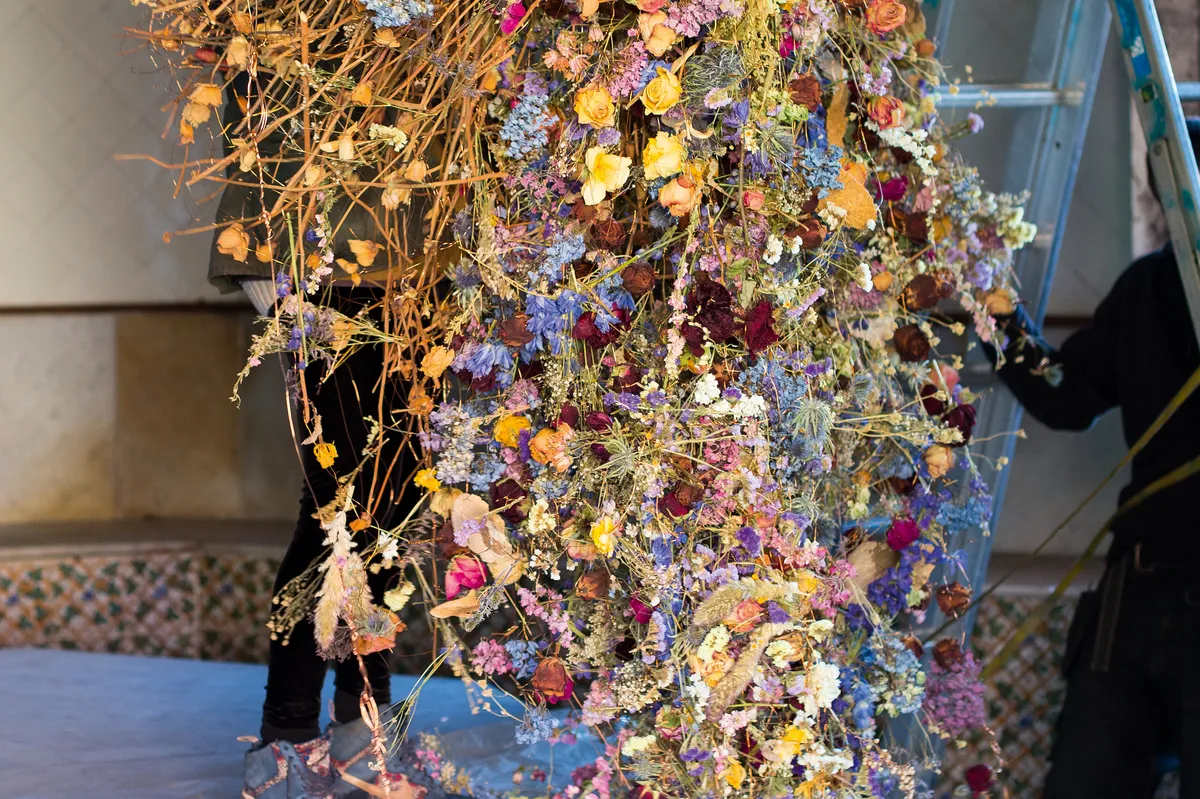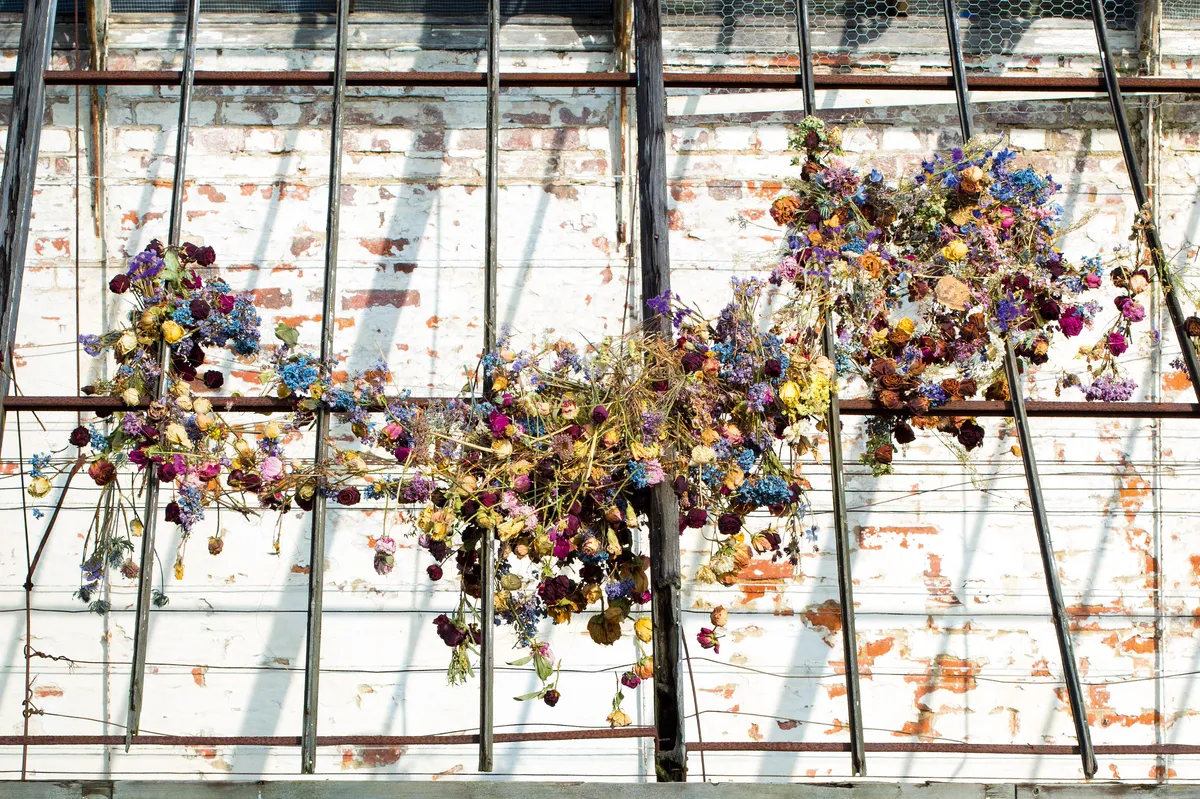Rebecca Louise Law makes eye-catching, ethereal sculptures using cascades of fresh and drying cut flowers. It’s a technique she has invented herself, harnessing both her artistic and horticultural knowledge to create artworks with all the delicacy and breathtaking natural beauty of a wild-flower meadow.

Rebecca studied fine art at Newcastle University where she tried out various natural materials before accidentally discovering the potential of flowers. “My father is a gardener and I went home one weekend and took a load of his dahlias back to college to experiment with,” she explains. Rebecca used the dahlias to create an installation exploring the processes of preservation and decay, and realised that she had found her perfect material. After graduating she decided to continue making floral artworks but felt she needed some practical experience. “I had to understand what I was working with before I could work as an artist.” Consequently she spent four years as a florist before setting up on her own in 2008.

Rebecca’s big break came in 2011 when she won her first major commission, Hanging Garden, a dramatic installation made for the Floral Hall at the Royal Opera House in London. It was such a success that Rebecca, now in her thirties, hasn’t stopped since and in the past five years she has worked on installations for clients as far afield as Japan, Athens and New York. She also makes smaller sculptures encased in glass boxes and framed pieces using flowers recycled from her temporary installations. “We never throw anything away,” she laughs.

The sculptures are made by tying flowers to lengths of copper wire. These are then manipulated into shape and suspended from the ceiling, allowing the flowers to dry naturally. Part of Rebecca’s skill lies in knowing how individual flowers will age and she is constantly experimenting with different species. “It’s what I like best – learning the whole journey of a species from beginning to end,” she says.

One of Rebecca’s installations was at the Luton Hoo Estate in Bedfordshire. Although designed by ‘Capability’ Brown, Luton Hoo’s gardens fell into disrepair in the 1980s, but are now being restored by volunteers. “It’s somewhere that’s really lost and beautiful and an incredible space – it was like a blank canvas for me,” says Rebecca. She’s used dried flowers collected over the past four years to create an installation called The Dairy 2016, a fragile, ghostly drift of plant forms that gently float above an old marble dairy slab.

Rebecca takes her inspiration from nature. “I want to capture a tiny part of the awe you get when you are completely surrounded by the landscape,” she says. But as well as its grandeur, she’s also fascinated by the minutiae of nature and her sculptures are as much about the detail of individual flowers as their overall impact. And this is why she prefers her sculptures to remain in situ for as long as possible, although it may seem perverse to make permanent sculptures out of such an ephemeral material. “The longer the installation is there, the more fascinating it becomes – the colour slowly disappears but the actual structure of the flower remains,” she explains, adding, “Flowers can last forever – they are a really amazing material.”